
As harsh summers set in, the demand for coolers and air conditioners rises. For Indian households, this demand spike leads to higher electricity consumption and increased bills. Some states in India have already witnessed a rise in electricity tariffs due to increased costs of imported coal and transportation.
Residents of Maharashtra are feeling the pocket pinch, particularly with MSEDCL’s recent decision to hike the average electricity bill by 7.5%.
Then, how can you get relief from the scorching heat and the soaring electricity bills? Go Solar!
How?
Air conditioners draw significant power and contribute to high electricity bills. A solar panel installation to power your air conditioner is a smarter choice. This way, you can run your AC on solar power and bid farewell to hefty electricity bills.
The math is straightforward: Compare the escalating electricity rates with your initial investment in solar and the returns it will yield over the next 25 years. You will realise that your savings on electricity bills far outweigh what you would have paid the power supplier if you hadn’t switched to solar.
As a rule of thumb (during the peak sunshine hours under ideal conditions), a 1 kW solar system can produce 4 units of electricity daily.
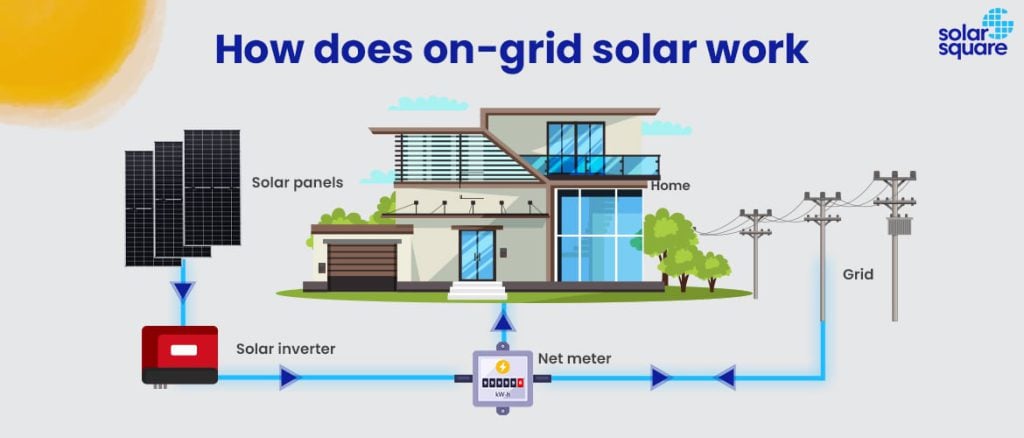
The generated DC units go to the next component of the solar system – the solar inverter, through output DC cables. The solar inverter converts DC power into AC electricity that can easily run your air conditioning units and all other household appliances.
How Can Solar Panels Run an AC Unit?
Let’s assume you have a 1-ton air conditioner at home, which you use for 8 hours daily.
The formula to calculate daily electricity consumption is ‘Power in kW x number of hours‘.
So, your AC’s daily electricity consumption will be ‘1 kW x 8 hours’ = 8 units of electricity.
A 2 kW system will be able to run your 1-ton air conditioner for 8 hours daily (since, as previously mentioned, a 1 kW solar system can produce 4 units of electricity/day).
Now let’s calculate the number of solar panels required to make a 2 kW solar system.
- Let’s say you select bifacial solar panels for your solar system
- A single bifacial panel, under ideal conditions, can produce around 540 watts of power
- 2 kW system = 2,000 watts
- The number of panels = the size of the system divided by power of one panel (in this case, 2,000/ 540 = 3.7)
You will need approximately 4 bifacial solar panels to run a 1-ton AC in your home.
What Number of Solar Panels Are Needed for Different AC Wattages?
The following ballpark figures indicate air conditioner usage for 8 hours daily.
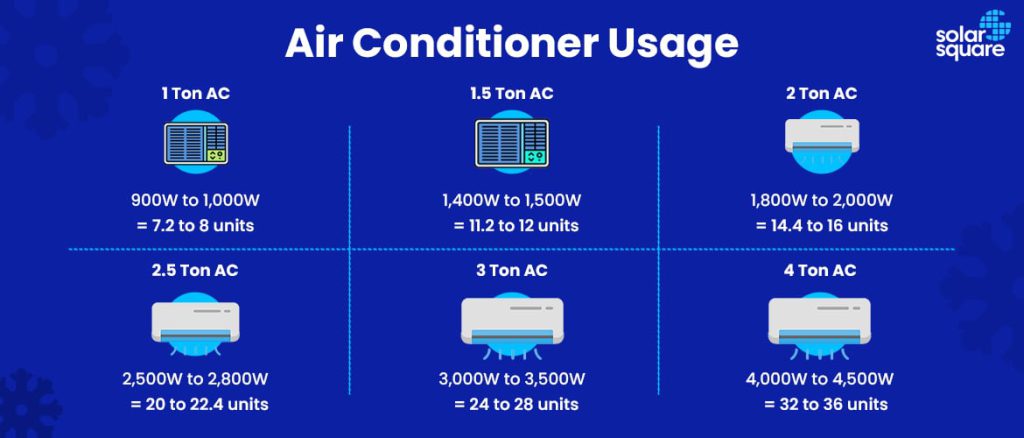
- 1 Ton AC: Typically, 900 to 1,000 watts = 7.2 to 8 units
- 1.5 Ton AC: Typically, 1,400 to 1,500 watts = 11.2 to 12 units
- 2 Ton AC: Typically, around 1,800 to 2,000 watts = 14.4 to 16 units
- 2.5 Ton AC: Typically, around 2,500 to 2,800 watts = 20 to 22.4 units
- 3 Ton AC: Typically, around 3,000 to 3,500 watts = 24 to 28 units
- 4 Ton AC: Typically, around 4,000 to 4,500 watts = 32 to 36 units
Pro Tip: You can calculate the number electricity needed using this formula: Wattage × hours used per day ÷ 1000
Top 4 Factors That Can Affect Solar Power and AC Functioning
- The Efficiency of Solar Panels
Three kinds of solar panels are used in residential installations: polycrystalline, monocrystalline, and bi-facial. The difference lies in their efficiency. The more efficient the panel is, the more sunlight it can convert into electricity.
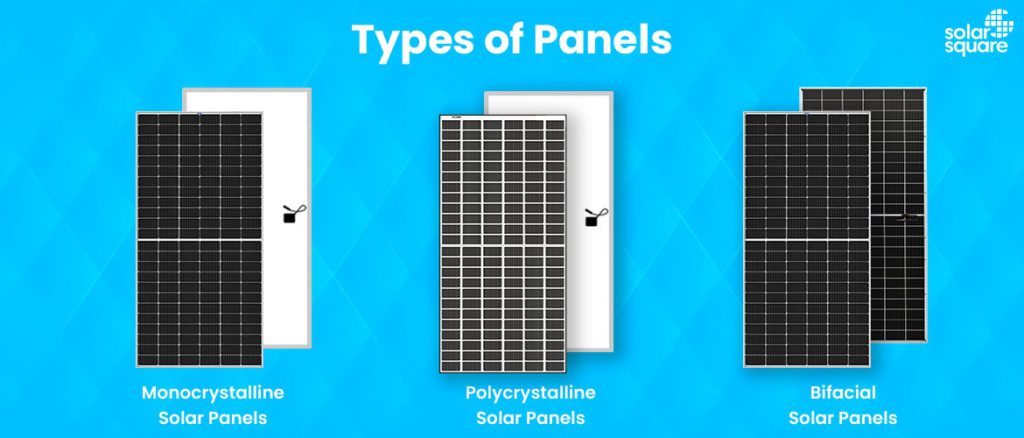
Here’s the efficiency range of each type of solar panel:
Polycrystalline solar panels: 16-17%
Monocrystalline solar panels: 19-21%
Bifacial solar panels: up to 22%
Did you know?
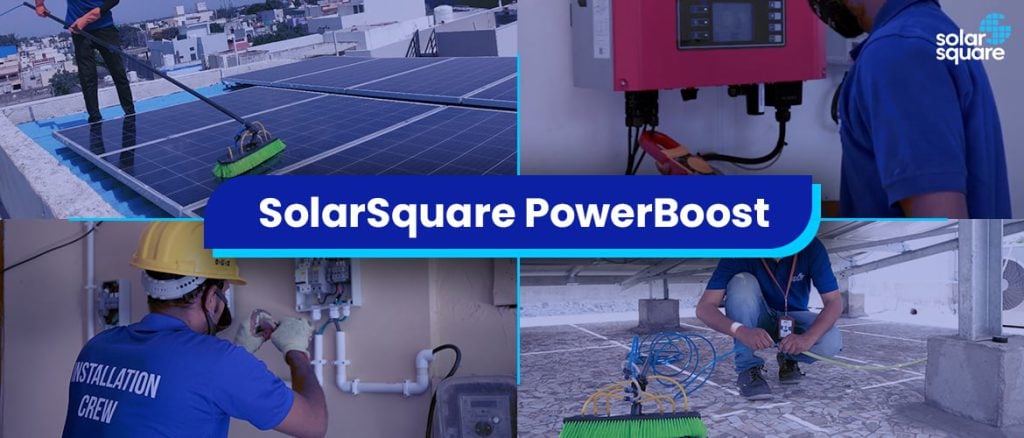
Once solar panels are installed, they will continue generating power with full efficiency only if you allow professionals to maintain them properly. Considering how crucial after-sales maintenance is, SolarSquare offers comprehensive after-sales maintenance services. Book a free solar consultation with our experts today and we guarantee that your panels will produce 30-40% more power than the panels that haven’t been properly cleaned for months.
- The Quality of Solar Panels
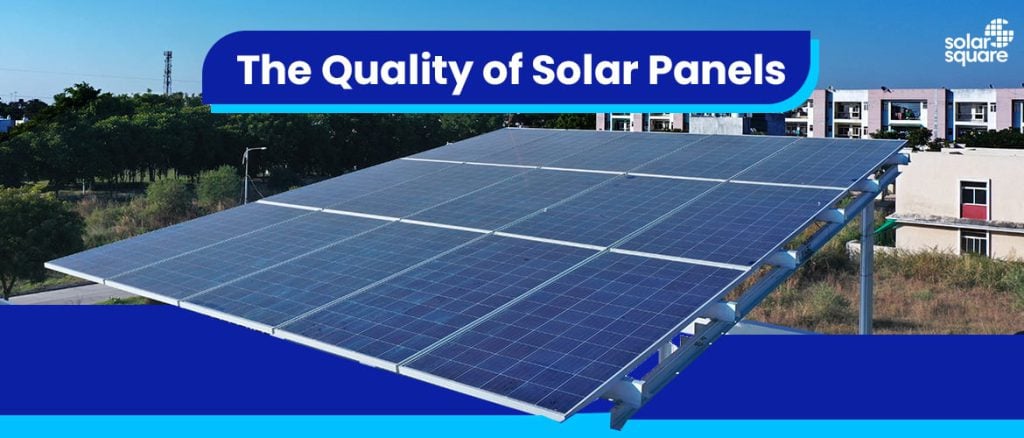
When investing your money, opt for the sahi solar, manufactured by top-tier companies. A solar system lasts for 25 years only if it’s manufactured, installed, and maintained by professionals throughout its lifespan.
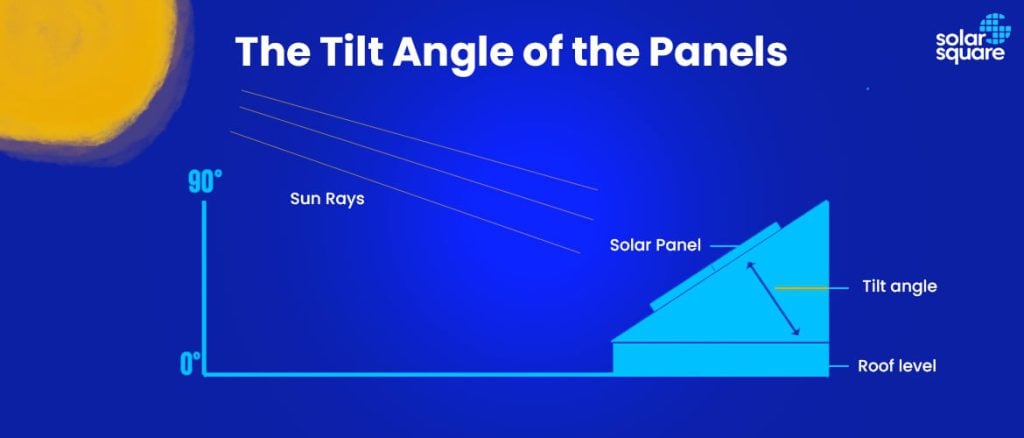
The correct alignment of solar panels determines the sunlight absorption by the panels. If the tilt angle isn’t suitable for your area, panels won’t harness sunlight efficiently.
At SolarSquare, our experts go beyond simply answering whether solar panels can power an AC. They assess your region and determine the optimal tilt angle. This alignment ensures panels remain perpendicular to the sun during peak hours (11 AM to 2 PM), maximising electricity production.
- The Scenery Around Your Home
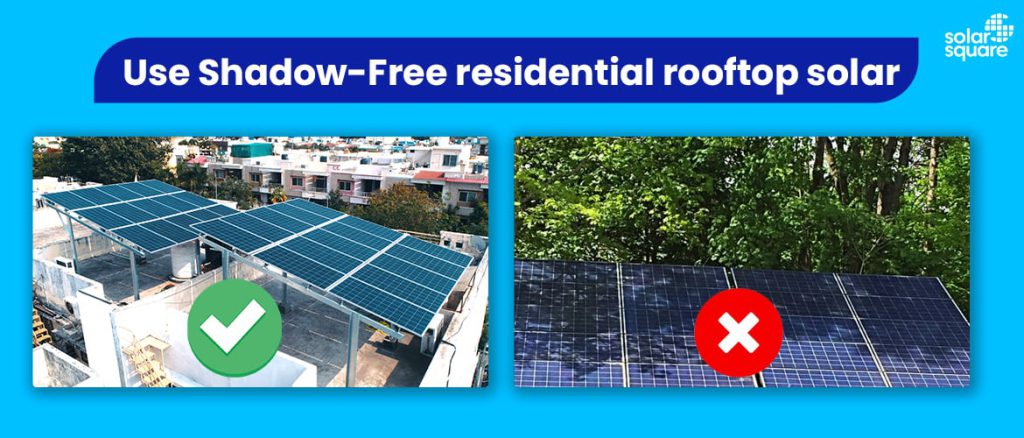
You could live in a sun-blessed location with enough sunlight. However, if huge buildings or trees cast shadows on your rooftop, direct sunlight, which solar panels require to generate electricity, will be scarce.
Homes with excessive shadows on their roofs require optimised tilt angles and mounting structure heights. The sun will not hang on the same level at all times. Hence, only professional installers can determine the best tilt angle for your solar panels based on the scenery around your home.
Book a free consultation with SolarSquare, and let us guide you towards the next steps in your solar journey.
Frequently Asked Questions
- What size solar panel system is required to run an air conditioner?
The correct solar system size will depend on how much energy your AC consumes. While a lot of many factors affect the sizing, here’s a benchmark you can use:
- You have a 1-ton AC at home
- 1 ton AC uses 1,000 watts of energy (1000 units of energy)
- 1000 watts = 1 kW
- Your AC runs for 8 hours
- Daily power consumption of this AC = 8 kWh (8 hours x 1 kW) = 8 units of electricity
- 1 kW system produces roughly 4 units per day = 4 kWh = 4 units of electricity
- Solar system size needed for your AC that has a consumption of 8 kWh = 2 kW
If you use bifacial monocrystalline panels of 540 watts for this 2 kW system, the number of panels needed = 2000/540 = 3.7.
Thus, you would need approximately 3-4 bifacial panels.
- How can I ensure optimal performance when running an air conditioner with solar panels?
Running air conditioning on solar power is a reality. But once you have installed solar panels, you must maintain them properly.
To ensure optimal performance, always choose SolarSquare – we offer the best after-sales services and care for your solar system’s overall health.
- What are the cost implications of running an air conditioner with solar panels?
Although you need to make an initial investment, it’s a myth that installing solar panels is expensive. Even the initial investment in a solar panel system can be easily offset by reduced electricity bills and government subsidies. The long-term benefits include savings on energy costs and increased property value.
- What Type of AC Unit Can Run on Solar Panels?
Solar panels can run all kinds of air conditioners provided you have the correct solar system size to produce the energy your air conditioner consumes.
- Can Solar Panel Run AC: How Stable are Solar Panels For Air Conditioning?
India is a tropical paradise that receives about 5 quadrillion kilowatt hours of sunlight annually. Choosing professional installers and top-tier solar panels ensures reliable air conditioning powered by solar energy.
